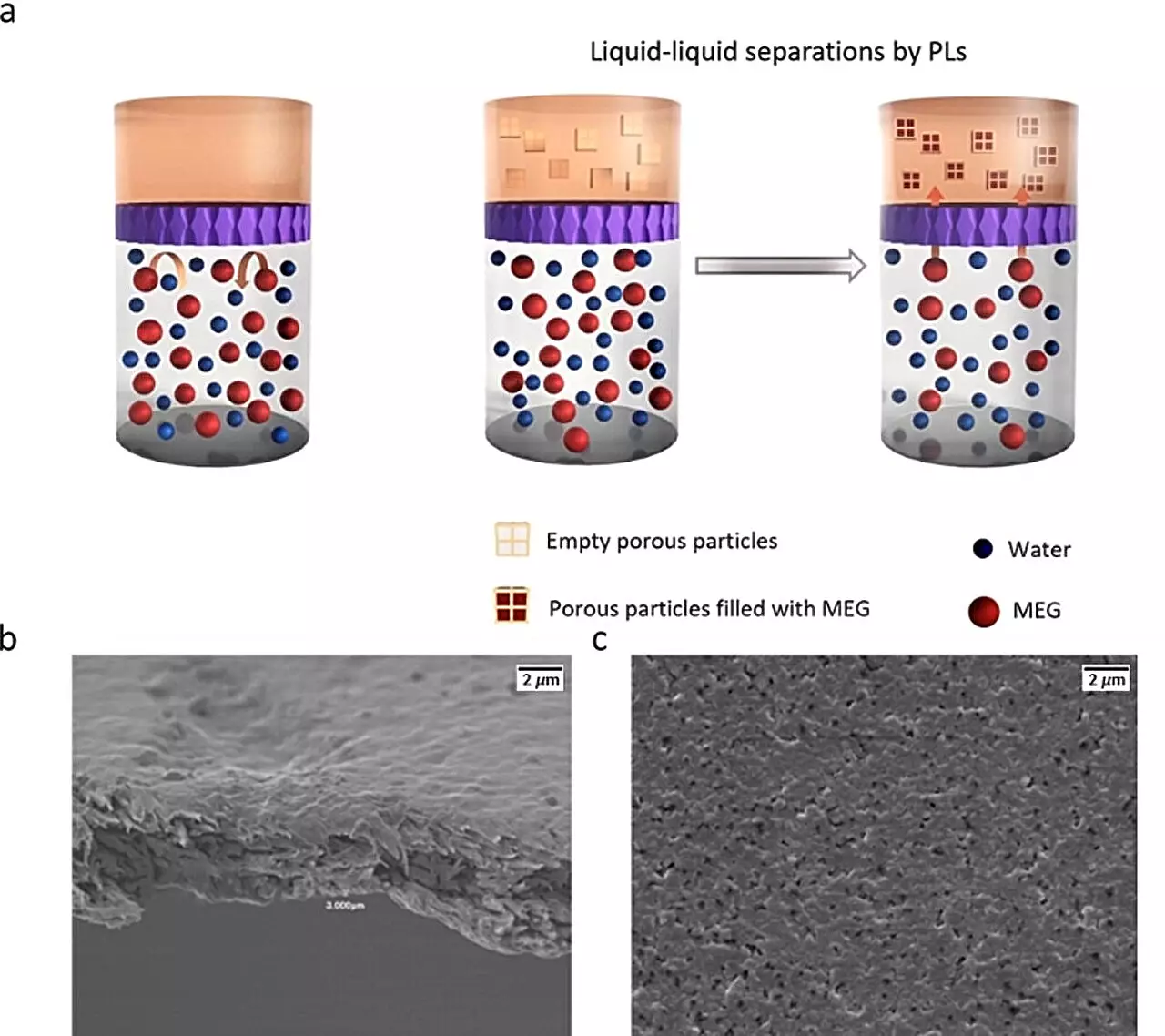In a groundbreaking study, scientists from the University of Birmingham and Queen’s University Belfast have unveiled the remarkable capabilities of porous liquids (PLs) for liquid-liquid separation. This innovative approach not only addresses significant environmental concerns but also opens up new possibilities in public health through enhanced beverage manufacturing processes. Published in the esteemed journal Angewandte Chemie International Edition, this research marks a pivotal moment in both chemical engineering and sustainable practices.
The impetus for this study stemmed from the pressing issue faced by the aeronautical industry, particularly concerning the environmental impact of monoethylene glycol (MEG)—a common de-icer. When MEG is mixed with water, it creates toxic runoff that poses grave threats to aquatic ecosystems. Current methods of disposal are often inadequate, leaving large quantities of this hazardous waste stored at airports. This scenario underlines the necessity for innovative solutions that can effectively mitigate environmental risks.
How Porous Liquids Function
Porous liquids, characterized by their permanent nanoscale cavities, offer a promising strategy for removing undesirable substances from aqueous mixtures. The research revealed that Type 3 porous liquids can absorb up to 88% of their pore volume in MEG while leaving water largely unabsorbed. This capability not only has implications for environmental cleanup but also highlights the versatility of porous liquids for various applications.
The research team expanded their exploration beyond environmental applications by examining the potential of porous liquids to modify alcohol content in beverages. With increasing consumer interest in low-alcohol and no-alcohol alternatives, the ability to reduce alcohol levels in products such as wine and gin—while maintaining their flavor—could revolutionize the beverage industry. Assistant Professor Deborah Crawford emphasized that this technique could help meet consumer demand for products that are less harmful yet still enjoyable.
The implications of this research extend well beyond the immediate findings. As companies and industries grapple with growing sustainability pressures, the ability to use porous liquids for effective separation processes could be transformative. This technology not only has the potential to improve environmental safety by providing a solution to hazardous waste management but could also influence manufacturing practices across sectors. Innovations such as this are crucial to reducing our ecological footprint while catering to evolving consumer preferences.
The study on porous liquids underscores a vital intersection between scientific innovation and societal needs. As the world continues to confront environmental challenges, the applications of PLs in both waste management and public health represent a step forward in sustainable practices. By exploring new methods of liquid-liquid extraction, this research highlights the critical role of interdisciplinary approaches in fostering solutions that hold promise for future generations. The enthusiasm from researchers indicates a growing recognition of porous liquids as key players in the quest for sustainability and healthier product offerings, setting the stage for significant advancements in both fields.


Leave a Reply